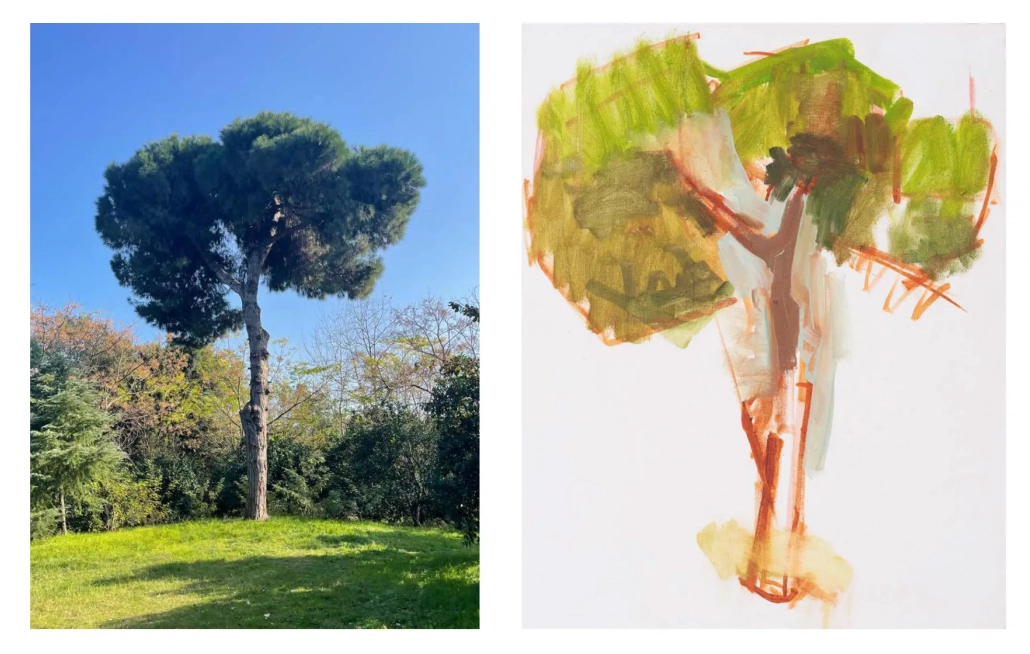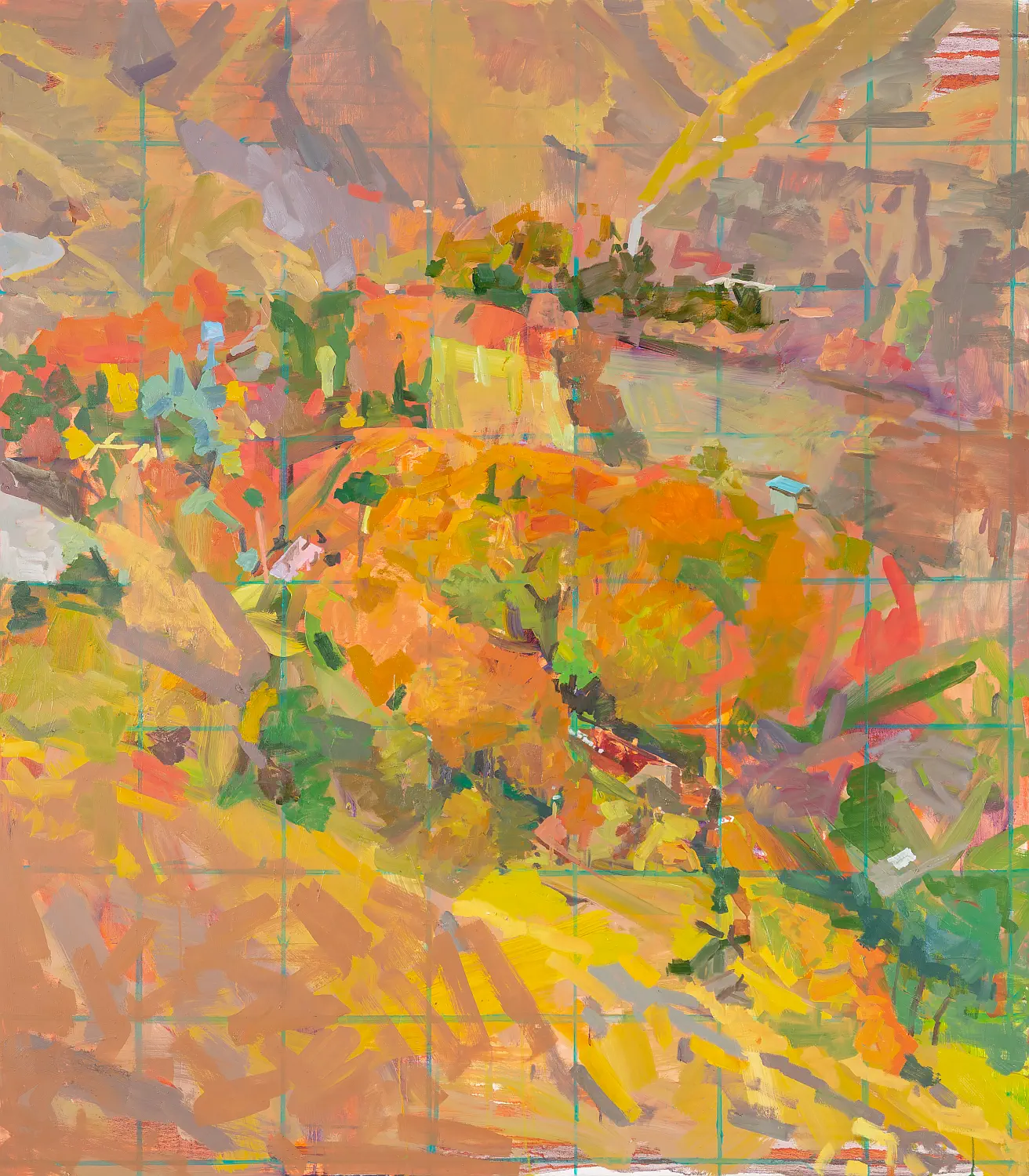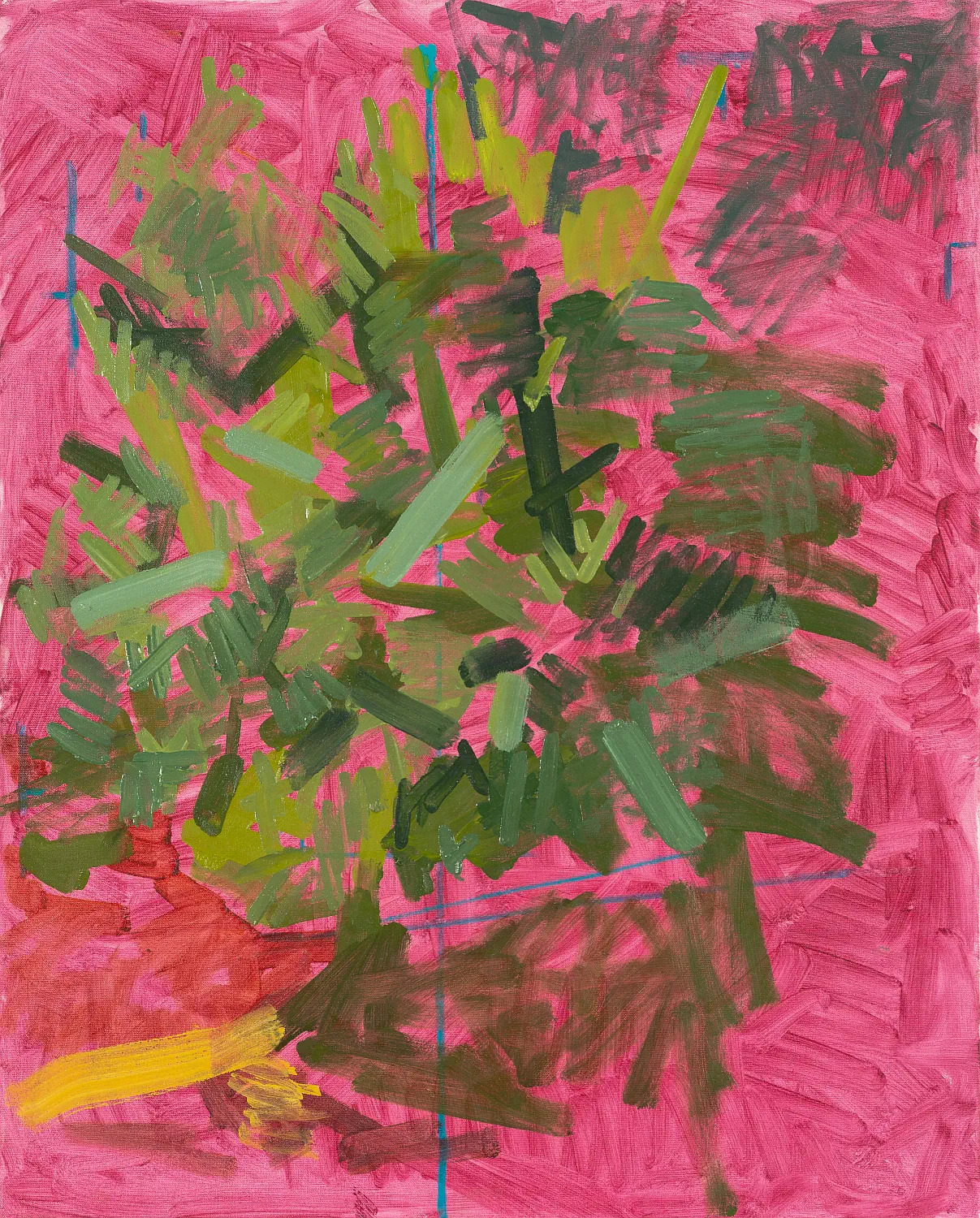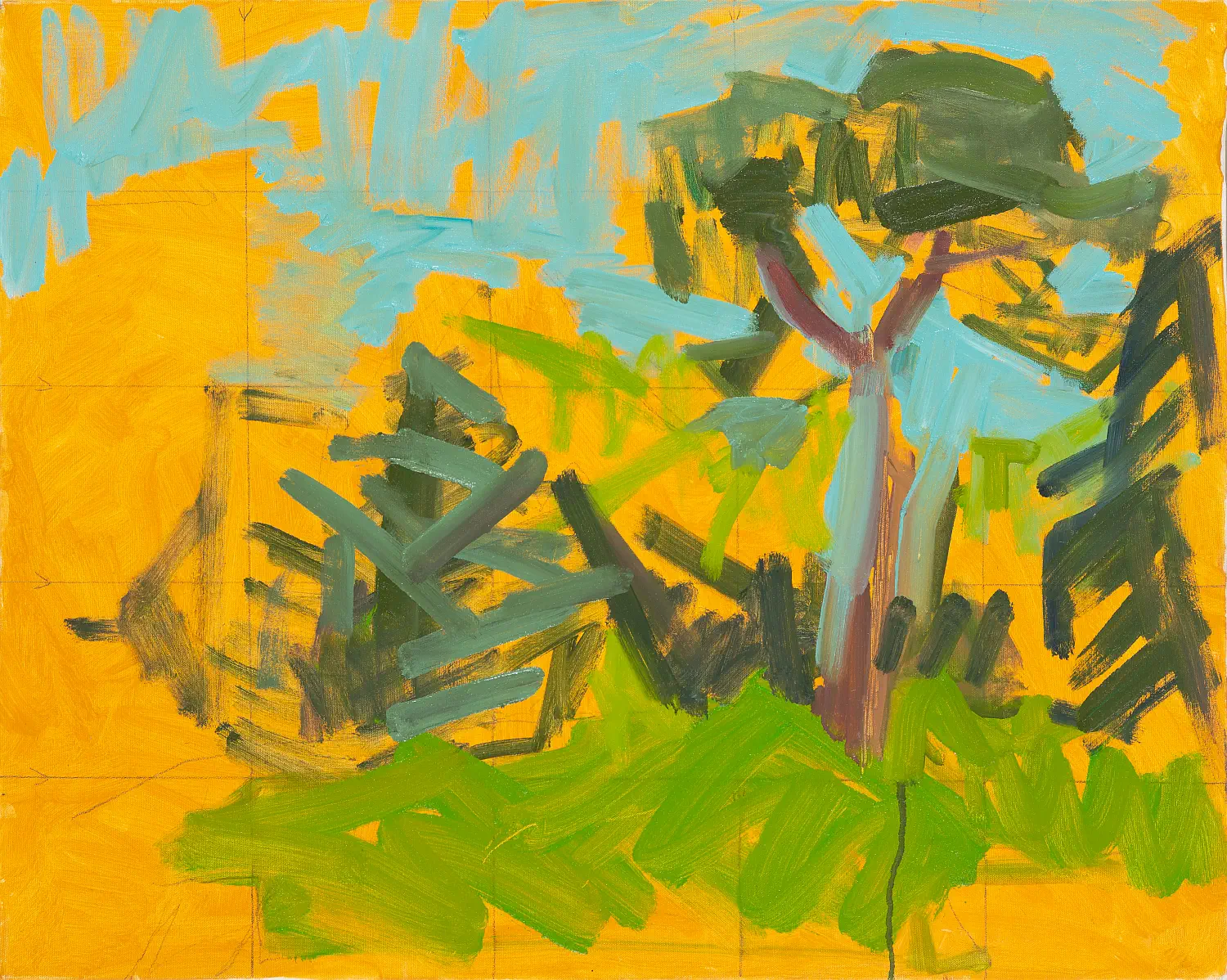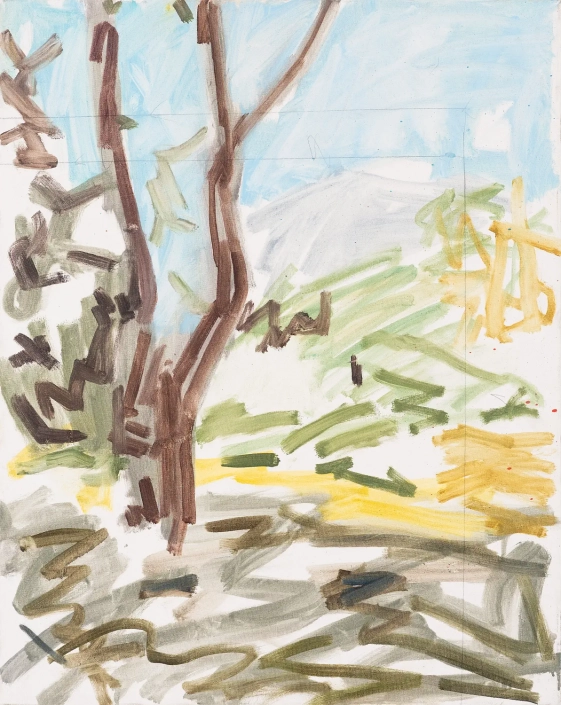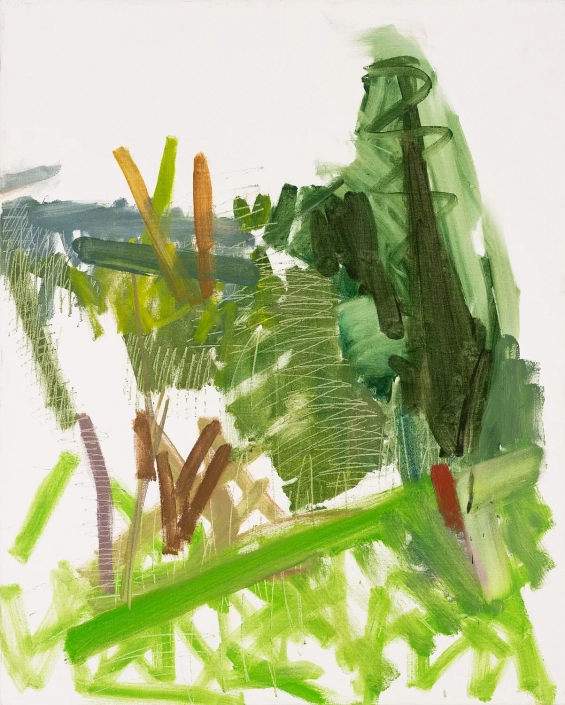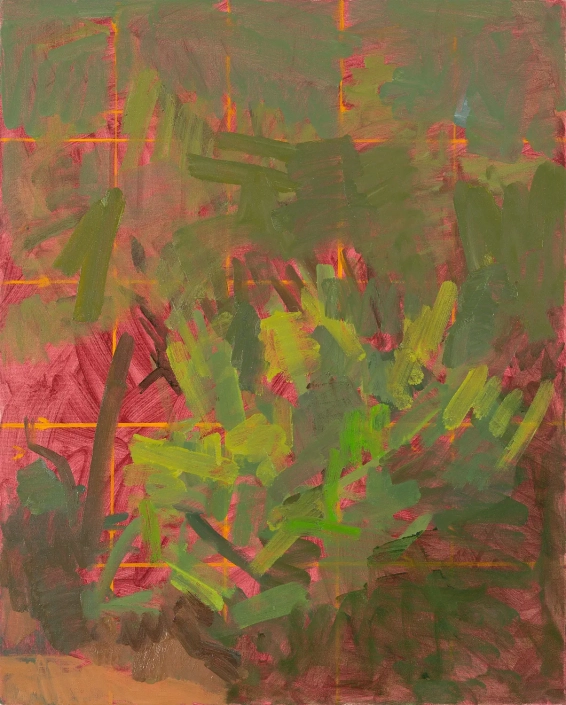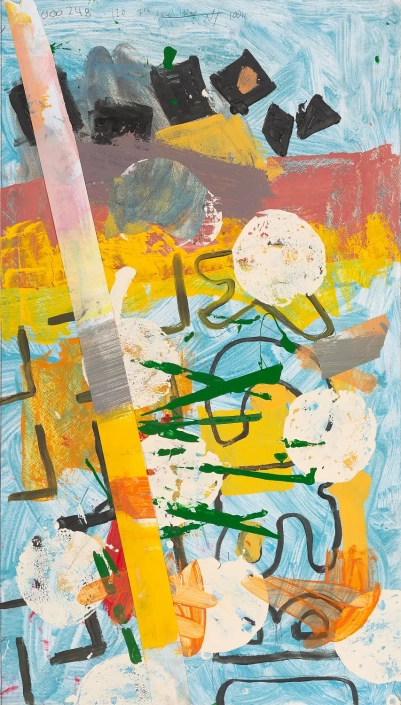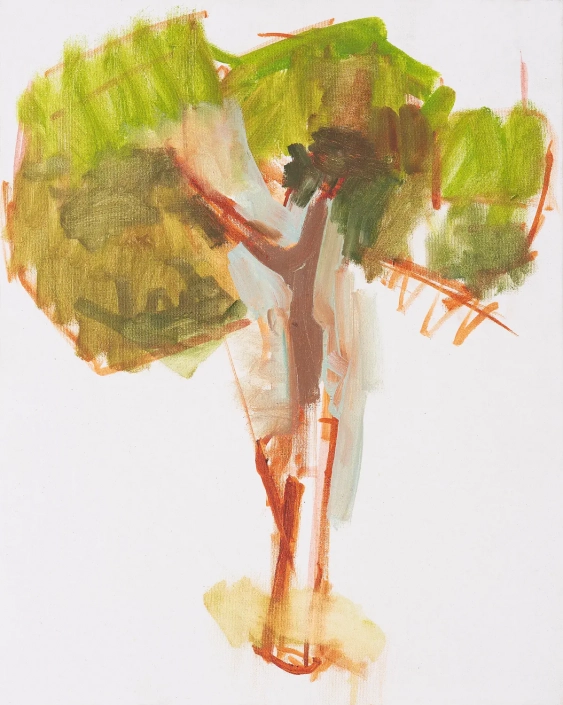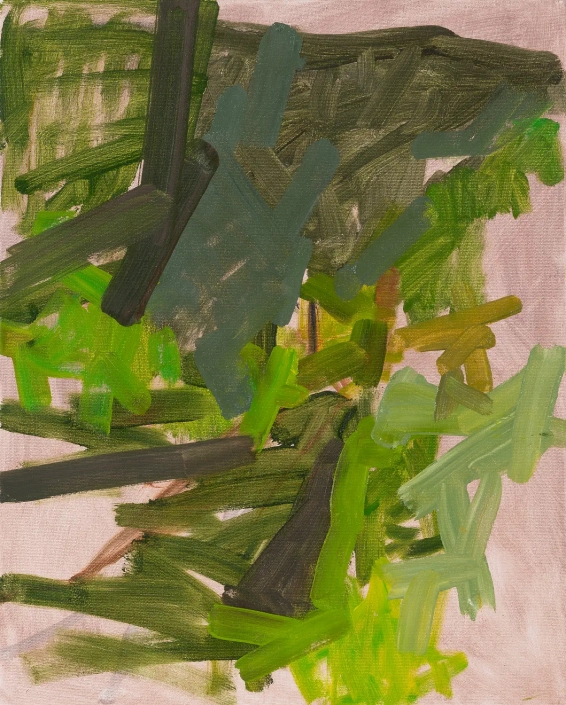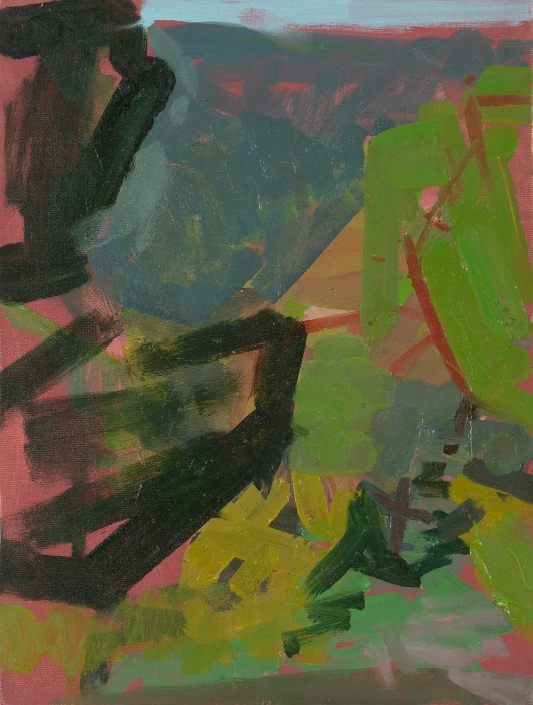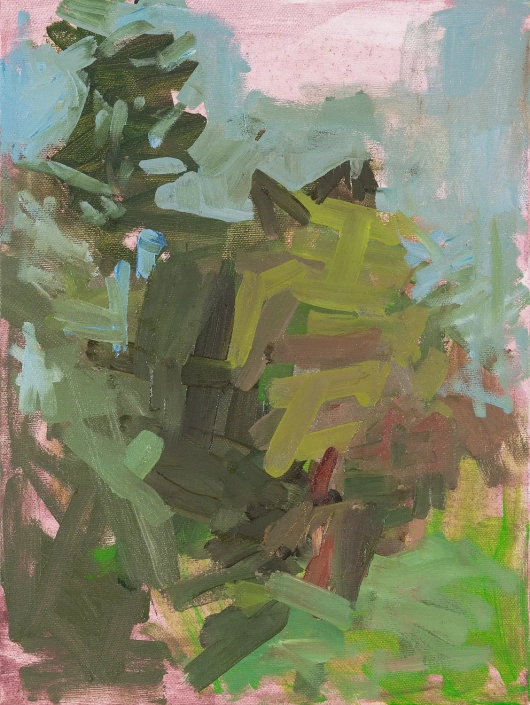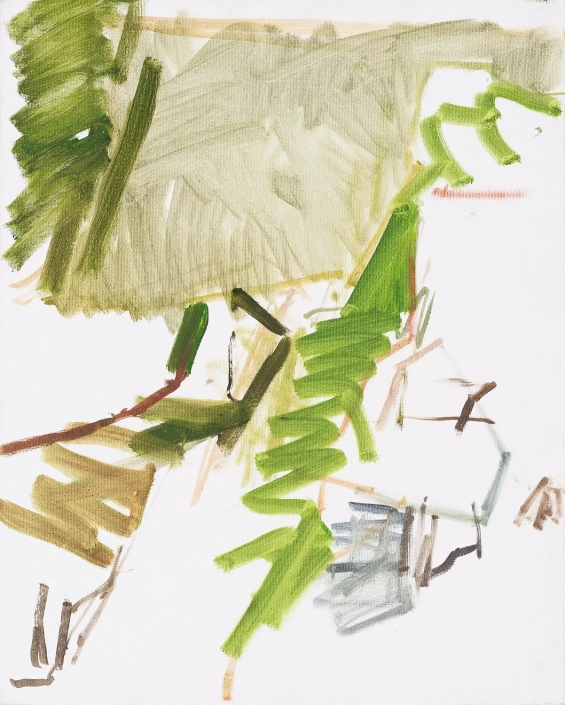The Ajoon Tree in New Habitat
Amirhossein Akhavan was coursing through the gloomiest of Iran’s bureaucratic maze when he decided to take a break from it all. To keep his studio functioning he had had to deal with functionaries. More than once, he had faced the prospect of his workspace and home being put up for auction. To visit his wife in prison he had had to pass through countless gray doors and corridors. The world of the artist was in turmoil. Akhavan went to his wife’s family garden in the Caspian region to paint, to create these landscapes. Meaning for him was in retreat.
Once there, colors and forms rushed to meet him. He found himself as if in an epileptic trance, unable to distinguish the boundaries that separated the vibrant flora before him. Foreground and background melded. Mountain, tree, and vegetation were spectrums of colors and forms.
It was no easy feat to stay in such purgatory, but he summoned patience and stayed. Eventually, he decided to focus on a single piece of flora, a tree that was planted 60 years ago by his wife’s great grandfather, Ajoon.
His Ajoon tree emerged from the blank canvas as an assemblage of lines and blotches of color. It refused to be reduced to a tree, or, more accurately, it was a tree defined by its own ecology, that of landscape painting.
As soon as a line meets a canvas, it is defined by its relationship to the frame, to the canvas and to the lines and blots of color that are to appear next. As such, every line on canvas is a vector that strives to find purpose, hint at something, create a world, establish a relationship with its surrounding. It imposes geometric lines on a non-geometrical world. It defies disorder. “The Ajoon Tree” is a tree organized by the logic of painting. If it tends towards abstraction, if it doesn’t correspond to what it is supposed to represent, it is because its painter, Amirhossein Akhavan, is beholding the world at this particular time in this particular way.

